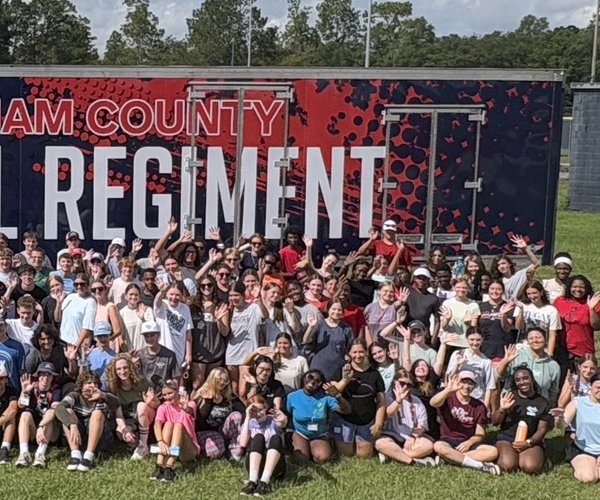With its plans for recreation in its sprawling Research Forest Tract in the nascent stages, the Effingham Industrial Development Authority wants input on those proposals — and it may ask for help in finding a way into its 2,600-acre holdings.
The Effingham Industrial Development Authority has begun to explore potential recreation uses for the sprawling property, sandwiched between Hodgeville Road and the Rincon city limits. But the only access to the property now is limited to dirt roads off Hodgeville and McCall roads.
“We’re starting to let everyone know what the potentials are,” IDA CEO John Henry said. “There are some things in there that we have to be the catalyst for. The vision is going to be hard to sell until we get a road there.”
Henry has been peppered with questions about the recreation potential for the Research Forest Tract. The IDA has had pieces of the Research Forest Tract set aside for recreation since the first proposals were developed three years ago.
“If you start planning those things, you’ve got to have a road,” Henry said.
“Without transportation, you can sit looking at that map for I don’t know how long,” IDA Chairman Chap Bennett said.
At the crux of the access to the Research Forest Tract is planned east-west corridor that would link Hodgeville Road with possibly Highway 21 on the east side. That road would have to cross two separate sets of railroad tracks, and the costs for potential flyovers over those crossings would be from $10 million to $15 million each.
Building that road likely would be done in pieces and phases as money is available.
“This is a major undertaking,” Henry said.
The wait for the proposed Effingham Parkway won’t hold up the development of Research Forest Tract, according to Henry. For now, the parkway is drawn to bisect the westernmost parcel of the Research Forest Tract.
“This development is not contingent upon Effingham Parkway,” he said.
Even without the parkway, the site is one of the best in the Southeast, Henry noted, particularly if the east-west connector is built. The megasite in Pooler, about 1,500 acres, has 600 contiguous acres. The Research Forest Tract has nearly 900 contiguous acres.
“This is one of the largest contiguous sites in the Southeast,” Henry explained. “It holds a lot of potential.
“But it’s going to take a while to get there. It’s going to take a lot of partnerships to get there,” Henry said. “It will take a lot of public support and a lot of government support.”
Henry would like to have private capital invested in the tract to help leverage some of the work that needs to be done.”
The IDA has had the Research Forest Tract since 2006. Henry has called it a legacy project, meaning its planning and its ultimate use is a long-term vision. When the IDA and DP Partners began their negotiations and plans for the tracts straddling I-16, that meant looking at Research Forest Tract’s potential was put off.
“When I-16 was hot and heavy, it got put on the backburner,” Henry said.
Tract D, bordered on one side by McCall Road and a rail line on the other, lies closest to Rincon. A sliver of the parcel, in fact, is within the city limits.
Bennett called transportation “A No. 1” with Tract D.
“How much revenue is spent in Savannah that is not spent here? And access to Rincon is a problem,” he said. “We miss a lot of sales tax revenue, and from their perspective, a lot of sales. I think that is a selling point for the road. We can create a lot of buy-in for the east-west corridor. Recreation doesn’t happen without it.”
IDA member Dennis Webb said Tract D has the potential to benefit Rincon more than any other project.
“If we don’t get access to (Highway) 21, we’re just wasting time,” he said.
Early concepts for the RFT identified a handful of possible entrances into the tract from the Rincon side. The IDA may enjoin county and Rincon officials about how to best access that property.
Henry estimated the east-west corridor, expected to be about two and a half miles long, could be built for around $4 million-$5 million — if not for the flyovers.
“The recreation area is an end product of putting in the infrastructure and roads,” Henry said.
Recreation uses the IDA has bandied about could be “five to seven, maybe 10 years out,” Henry said.
“It’s not something we can do overnight,” he said. “We can’t hire an engineer to see where the ball fields need to go or where the swing sets need to go. There’s a lot of planning left to be done. We’ve got a long way to go.
“We can’t build a regional park to rival Mill Creek in Statesboro in two years.”
Centered around a stormwater management plan, Henry said the IDA decided to do something for the community and for recreation.
“If we can show our vision, I think it will sell itself to the community,” Henry said. “It’s going to take a vision that we formulate, that we polish and that we hand off to someone else.
“It’s going to be planned and well-thought out,” he said. “There’s a lot of things we can do to let it pay for itself. But we have to get the ball rolling.”





